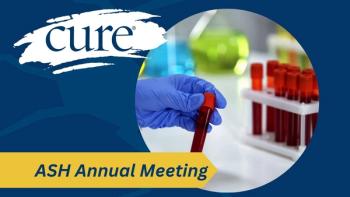
Understanding the Basics of Chronic Lymphocytic Leukemia

Transcription:
Kristie L. Kahl: In simple terms, can you explain what chronic lymphocytic is?
Dr. Susan O’Brien: It’s a leukemia, which by definition means it's in the blood and in the bone marrow because inside your bone marrow is where all your blood cells are made. As you heard from the title, it's a chronic leukemia. There are acute leukemias, but this is a chronic one that people can live with for many years.
There are two main types of cells – myeloid cells…(and lymphoid cells). This one is a leukemia of lymphoid cells, hence the name chronic lymphoid leukemia.
Kristie L. Kahl: How does CLL develop?
Susan O’Brien: That’s really not known. In most cases, there is an association with Agent Orange, so sometimes Vietnam war veterans who develop CLL, that is considered a service-related injury. But in the vast majority of people who have CLL, we don't actually know why they develop CLL and that's a very active area of research.
Kristie L. Kahl: Are there any particular signs and symptoms that individuals can look for?
Dr. Susan O’Brien: The most common way that CLL actually gets diagnosed is (through a) routine physical. That’s because, in the vast majority of cases, most people at the time they developed CLL actually don't have any symptoms.
So, they tend to be having a routine blood count or as part of let's say a pre-op. Sometimes in people who are going to have knee replacements, I've seen this where they have a pre-op blood test and their lymphocyte count is high and they have no symptoms at all.
They can, however, present with lymph nodes – meaning an enlarged lymph gland just like you can get an enlarged lymph gland in your neck when you have an Infection. Those lymph glands can swell up somewhat from CLL. Now, they're generally not painful but if, say, a man is shaving or something like that they might notice “Oh what's this?” So, sometimes people do notice lymph nodes.
It's unusual that people have a lot of symptoms when they first present, but in someone who had chronic fatigue or night sweats, it's always good to get a routine blood test. Although there's many other reasons why people can have fatigue other than CLL.
Kristie L. Kahl: There’s slow- and fast-growing CLL. What’s the difference between the two?
Dr. Susan O’Brien: In most people, the disease is slow-growing. Again, that's why it's chronic. There are few people who have more fast-paced disease. And how can we predict that? Well we predict that by looking at some prognostic factors in terms of looking at certain things in the patient’s cells. For example, we look at if there are any chromosome abnormalities, various proteins in the cell called zap70 or CD38. We look at a variety of things inside the cell to try and predict is this going to be a slow-moving disease or faster.
To give some perspective on what fast-growing CLL is, it is someone who maybe is asymptomatic at the time they get diagnosed but within let's say a year or so is already requiring therapy. That's what we would consider fast moving in chronic lymphocytic leukemia.
Kristie L. Kahl: We see approvals for CLL in tandem with small lymphocytic leukemia (SLL). Can you explain what SLL is and why we see this?
Dr. Susan O’Brien: So they're really pretty much the same disease, which is why as you said you see drug approvals generally for both. The difference is in SLL, which stands for small lymphocytic lymphoma, you notice it doesn't have the word leukemia. So, the difference is that those patients don't have blood involvement. So, they can have enlarged lymph nodes. In fact, if you take a lymph node biopsy from a patient with CLL or SLL, you wouldn't know which disease they have because the lymph nodes are exactly the same disease. You only know because of the semantics. If you know what their blood counts are, if they're leukemia or lymphoma.
Patients with SLL can have bone marrow involvement. It's not just necessarily lymph nodes, but by definition they don't have a peripheral blood involvement. So their peripheral blood counts look relatively normal but the disease is essentially the same disease. It's either just not in the blood or is in the blood and essentially they respond to the same treatments.
Kristie L. Kahl: What would you say is your biggest piece of advice for a patient who is diagnosed with CLL?
Dr. Susan O’Brien: I would say this to anybody who's diagnosed with a serious disease like cancer: I would see my oncologist. Talk to them about the plan and then I would get a second opinion at a major referral center or with a real expert in the disease. Part of the reason for that is that, although as leukemias go, CLL is common compared to what we call solid tumors, like tumors where you have a mass, it's much rarer. So most people that are in private practice may have a couple of patients with CLL, but generally not very many. So they don't have a lot of experience with it. You do want to talk to your oncologist about the plan first because not only would I recommend they get a second opinion at a major center or with an expert in the disease but it's good to know what your oncologist is proposing as a plan so that you you can then discuss that with the expert. If the expert says that's exactly what I would do, then you can feel even more confident when you go back to your physician. It’s really important and I don't think that's specific for CLL. I would say that for or any kind of a disease that can really impact your life.
Transcript edited for clarity.




